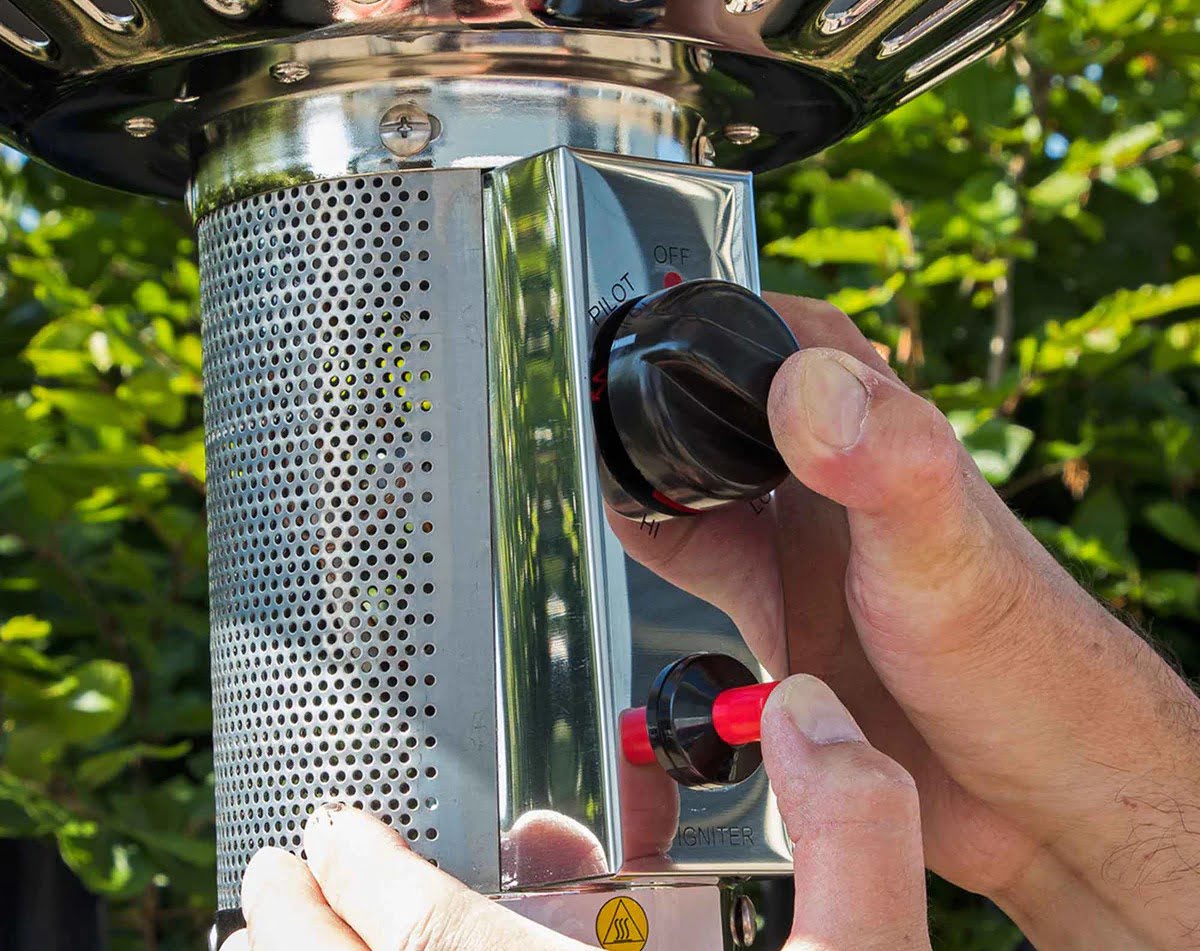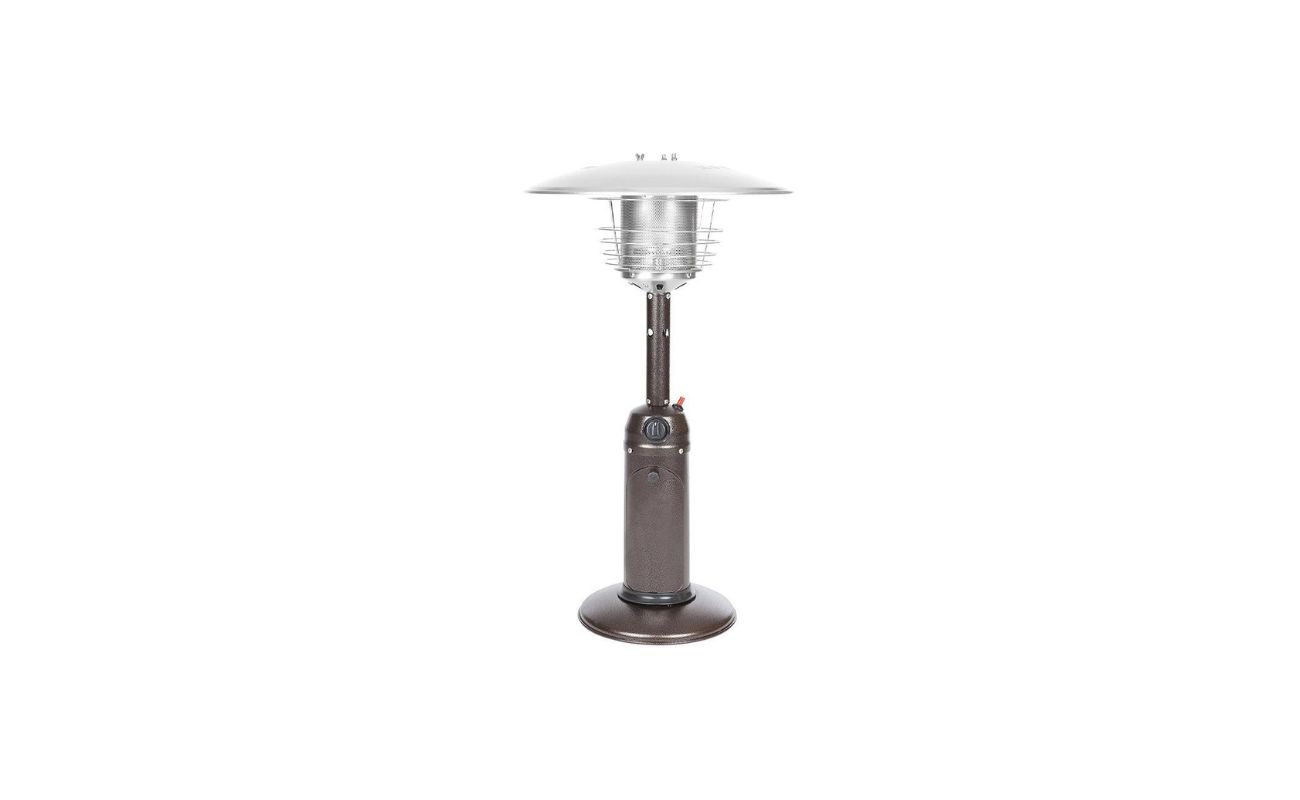How To Light An Outdoor Heater

Outdoor heaters extend the usability of patios, decks, and outdoor dining spaces, allowing you to enjoy them even as temperatures dip. But using them wisely, particularly from an energy-efficiency standpoint, is crucial. This guide covers everything you need to know about safely and efficiently lighting and operating various types of outdoor heaters, maximizing comfort while minimizing your carbon footprint and energy bills.
Understanding Different Types of Outdoor Heaters
Before diving into lighting procedures, it's essential to understand the types of outdoor heaters available. Each type has unique characteristics that impact its energy consumption and lighting method.
Propane Heaters
Propane heaters, typically freestanding mushroom-shaped units or tabletop models, are popular for their portability and ability to quickly generate heat. They use a propane tank as fuel. A standard 20-pound propane tank can last anywhere from 8 to 10 hours on a high setting, costing roughly $20-$30 to refill. While convenient, propane heaters are less energy-efficient compared to electric or natural gas options, costing as much as $2 to $3 per hour of use, according to data from the U.S. Energy Information Administration.
Natural Gas Heaters
Natural gas heaters, often permanently installed, offer a consistent and often cheaper fuel source than propane. They connect directly to your home's natural gas line. While installation costs are higher (requiring professional plumbing), the operating costs are generally lower. Natural gas rates vary, but on average, heating with natural gas costs between $1 to $1.50 per hour, making them a more economical choice for frequent use. ROI is generally faster for businesses running heaters for many hours a week.
Electric Heaters
Electric heaters come in various forms, including infrared, radiant, and convection models. They are easy to operate and require no fuel tank. While convenient, electric heaters can significantly increase your electricity bill. A 1500-watt electric heater costs around $0.20 to $0.30 per hour to run, based on the national average electricity rate of around $0.15 per kilowatt-hour, but prices fluctuate based on location. Check with your local provider for details. However, infrared heaters are directional, and thus are generally more efficient than convection heaters because they don't heat the air.
Wood-Burning Heaters
Wood-burning fire pits and chimineas offer a rustic ambiance but require a readily available supply of wood. While wood is often cheaper than propane, the burning process can release particulate matter into the air, impacting air quality. Consider your local air quality regulations before opting for wood-burning heaters.
How to Light a Propane Outdoor Heater
Lighting a propane heater requires careful attention to safety. Always refer to the manufacturer's instructions for your specific model. Here are the general steps:
- Safety Check: Ensure the heater is placed on a stable, level surface, away from flammable materials. Check the propane tank for leaks. If you smell gas, do not proceed. Contact your propane supplier or fire department.
- Tank Connection: Open the propane tank valve slowly, turning it counterclockwise.
- Ignition: Most propane heaters have an igniter button or switch. Follow the manufacturer’s specific instructions for ignition. Some heaters require you to hold down a control knob while pressing the igniter. If the igniter fails, you can use a long-handled lighter, carefully following the instructions.
- Flame Adjustment: Once lit, adjust the flame to your desired level using the control knob.
- Shut Down: To turn off the heater, turn the control knob to the "off" position and close the propane tank valve. Let the heater cool down completely before covering it.
How to Light a Natural Gas Outdoor Heater
Lighting a natural gas heater typically involves a pilot light. If the pilot light is out, follow these steps:
- Safety Check: Ensure the area around the heater is clear of flammable materials. If you smell gas, do not proceed. Evacuate the area and contact your gas company immediately.
- Locate Pilot Light Assembly: This is usually near the base of the heater.
- Resetting the Pilot Light: Most heaters have a reset button. Follow the manufacturer’s instructions for resetting the pilot light.
- Pilot Light Ignition: After resetting, push and hold the pilot light button while simultaneously using a long-handled lighter to ignite the pilot light. Continue holding the button for about 30 seconds to allow the thermocouple to heat up.
- Main Burner Ignition: Once the pilot light stays lit, release the pilot light button and turn the control knob to the "on" position. The main burner should ignite.
- Shut Down: To turn off the heater, turn the control knob to the "off" or "pilot" position.
How to Light an Electric Outdoor Heater
Electric heaters are the simplest to operate:
- Placement: Ensure the heater is placed on a stable surface, away from water or moisture.
- Plug In: Plug the heater into a grounded electrical outlet. Avoid using extension cords if possible, as they can overheat. If an extension cord is necessary, use a heavy-duty, outdoor-rated cord.
- Operation: Turn on the heater using the power switch or remote control. Adjust the heat setting as needed.
- Shut Down: Turn off the heater and unplug it when not in use.
How to Light a Wood-Burning Outdoor Heater
Lighting a wood-burning heater requires patience and careful preparation:
- Clear the Area: Ensure the area around the fire pit or chiminea is clear of flammable materials.
- Prepare the Kindling: Use dry kindling, such as small twigs and paper, to start the fire.
- Arrange the Wood: Place the kindling in the center of the fire pit or chiminea and light it. Once the kindling is burning, gradually add larger pieces of wood, forming a teepee or log cabin structure to allow for airflow.
- Maintain the Fire: Add wood as needed to maintain the fire. Use a poker to adjust the logs and ensure proper airflow.
- Extinguish the Fire: Allow the fire to burn down completely. Douse the embers with water and stir them to ensure they are completely extinguished. Never leave a fire unattended.
Maximizing Energy Efficiency and Savings
Regardless of the type of outdoor heater you choose, several strategies can help you maximize energy efficiency and reduce your heating costs:
- Use Smart Controls: Integrate your outdoor heater with a smart thermostat or sensor. Many smart thermostats allow you to set schedules and remotely control your heater, ensuring it's only running when needed. Some models even integrate with weather forecasts, automatically adjusting the heat output based on the current temperature.
- Optimize Placement: Position your heater strategically to maximize its effectiveness. Block wind by utilizing walls, fences, or strategically placed shrubs.
- Use a Wind Guard: For propane and natural gas heaters, consider using a wind guard to prevent the flame from being blown out, reducing fuel consumption.
- Insulate the Area: Use outdoor curtains or screens to enclose your patio or deck, trapping heat and reducing the amount of energy needed to maintain a comfortable temperature.
- Regular Maintenance: Regularly inspect and maintain your heater to ensure it's operating efficiently. Clean burners, check for leaks, and replace worn parts.
- Consider Government Rebates: Check with your local utility company and state energy office for available rebates on energy-efficient outdoor heaters. Many utilities offer incentives for upgrading to high-efficiency models. Energy Star is a great resource.
Safety Precautions
Operating outdoor heaters safely is paramount:
- Carbon Monoxide: Never use propane or natural gas heaters indoors or in enclosed spaces. These heaters produce carbon monoxide, a colorless, odorless gas that can be deadly.
- Flammable Materials: Keep flammable materials away from all types of outdoor heaters.
- Children and Pets: Supervise children and pets around outdoor heaters to prevent burns or accidents.
- Proper Ventilation: Ensure adequate ventilation when using outdoor heaters in partially enclosed spaces.
- Regular Inspections: Regularly inspect your heater for damage or leaks.
Smart Home Integration for Energy Efficiency
Integrating your outdoor heater into your smart home ecosystem offers several benefits. Smart thermostats can be programmed to adjust the heat output based on occupancy, weather conditions, and time of day. Smart sensors can detect when someone is using the outdoor space and automatically turn on the heater. Moreover, some smart home systems allow you to monitor your energy consumption in real-time, providing valuable insights into your heating habits and helping you identify opportunities to save energy.
For example, combining a motion sensor with a smart electric patio heater allows it to automatically turn on when movement is detected within a specific range. When combined with a smart weather station, the system could delay activating the heater until the ambient temperature drops below a certain point.
The Future of Outdoor Heating
The outdoor heating industry is constantly evolving, with manufacturers developing more energy-efficient and environmentally friendly technologies. Expect to see more advanced infrared heaters, improved combustion technologies for propane and natural gas heaters, and integration with renewable energy sources like solar power. Moreover, as smart home technology becomes more prevalent, outdoor heaters will become more integrated into smart home ecosystems, allowing for greater control and energy savings.
By understanding the different types of outdoor heaters, following proper lighting procedures, and implementing energy-saving strategies, you can enjoy your outdoor space comfortably while minimizing your environmental impact and energy bills. Embrace smart home technology, prioritize safety, and stay informed about the latest advancements in outdoor heating to make the most of your outdoor living experience.










